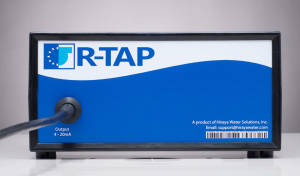When saving up to buy a home, most Filipinos will gravitate toward cutting back on their luxury spending. While this is an admirable goal, it’s also necessary to reconsider how much we spend on utilities, such as electricity and water. As these are basic necessities, it’s easy to overlook when we use these in excess, despite the fact that a little wastage here and there does quickly add up. In other words, if you see a faucet leaking even just a few droplets, you could very well be flushing money down the drain.
Optimizing water pressure for Filipino homes
R-TAP, which was founded by Stephen Larcia, Mark Stanley Cleto, Ann Margarett Marigondon, Rafael King Ramos, and Gregorio Ortiz, is one of a growing number of startups in the Philippines that aims to address wastage in Filipino homes. Funded by the Ideaspace Foundation, R-TAP’s particular advocacy is water wastage.

According to Larcia, there is an optimal level of water pressure for Filipino homes. Going below this level results in poor service, such as water not reaching the second floor. Yet going above this optimal level is also a bad thing, as it results in minor leaks hidden underground.
Larcia explained,More power is wasted as well due to over-pumping. So the idea is to increase the accuracy of pump operation and maintain the pressure at the optimum level at any given time.
The R-TAP system achieves this optimal level through a series of sensors and electronic devices installed at strategic locations within a village or area. Larcia shared that R-Tap’s self-learning algorithm has the capability to understand the behavior and characteristics of the water network. As such, R-Tap allows the pump to adjust continuously and accurately to provide only the needed pressure at any given time.
R-TAP could conceivably save water service providers millions worth of water each year, a savings which could be passed onto the consumer in the form of lower prices.
Our role in water conservation
Despite R-TAP’s innovative system, Larcia was quick to emphasize that consumers must also do their part to reduce water wastage in their households. One such way is by checking for leaks. This can be done by shutting off all the water faucets and then monitoring the water meter.
This will give them an accurate estimate of how much water is lost due to leakage within their system. If they get a large reading, and that there are no clues to identify the exact location of their leaks, then it would be wise to get an expert to help them identify and repair these leaks.
Another huge part of conserving water in the home comes down to simple discipline. Larcia said that you could use a glass of water when brushing your teeth, or use a container when washing the dishes. The gray water produced from these water conservation efforts could then be used to water your lawn or flush your toilets, which can be a significant source of water waste.
For toilets, Larcia recommends models with a dual flush.
This way you will not need to flush a large volume when there is no need to.
He added that if you have no plans of replacing your toilets, and you feel the existing ones are flushing excessive volume, you may want to place a bottle of water inside the toilet tank to decrease the volume of water that gets flushed.
In the end, it’s not about mastering a set of tips. Instead, it’s about having a particular kind of orientation – the understanding that we must make an effort to save water, because the money we waste in wasting water could be better spent elsewhere.
If we are prospective homeowners, water saved means money. If we are already privileged enough to own a home, water saved means money saved to improving our standard of living at home, and these are surely causes that we can all get behind.










